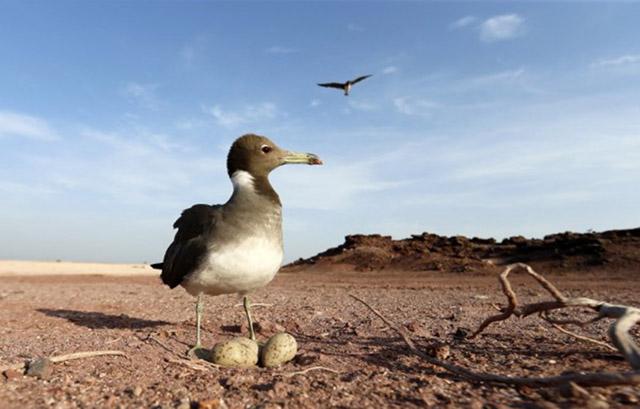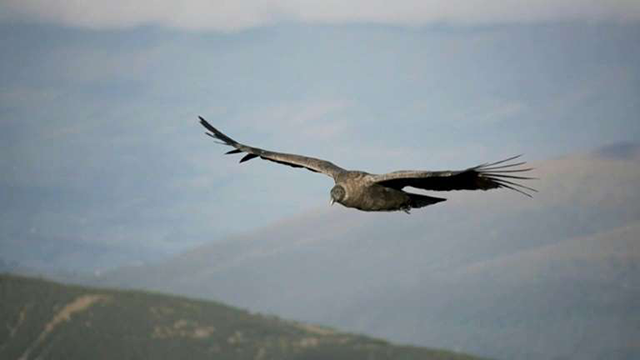You are here
Egg shape depends on flying skills of bird
By AFP - Jun 29,2017 - Last updated at Jun 29,2017

Photo taken on May 12, shows a sooty gull standing next to eggs on the island of Sir Bu Nair, Emirate of Sharjah (AFP photo by Karim Sahib)
WASHINGTON — The rich variety in shapes of the eggs that birds lay — elliptical, pointy, spherical — seems to be linked to how well a given bird flies, researchers report.
The recently released study which appeared in the US journal Science stems from the most extensive research yet on a mystery that has flummoxed biologists for centuries.
“In contrast to classic hypotheses, we discovered that flight may influence egg shape. Birds that are good fliers tend to lay asymmetric or elliptical eggs,” said Mary Caswell Stoddard, a biologist at Princeton University and one of the lead authors of the study.
Another finding is that the flexible inner membrane of the egg, not the hard outshell, is what generates the diversity of eggs out there in nature.
Until now, scientists have put forth a variety of theories about the variety of egg shapes. One says that the place where a bird nests is what determines the egg shape.
This line of thinking held that birds that nest near a cliff often lay eggs that are cone-shaped so that if they roll, they do so in a tight circle and do not fall off the precipice.
In order to settle the debate, researchers looked at the shape of 49,175 eggs from around 1,400 species of birds, some of them extinct. This came from a database at the Museum of Vertebrate Zoology at the University of California, Berkeley.
The eggs were classified according to how asymmetrical and elliptical they were, and by biometric and environmental parameters.
The researchers then created a mathematical model bringing together all of the variations in shape and other factors.
They were then able to study the links between egg shape and physiological traits of birds, and determined that one of the best parameters for predicting egg shape is a bird’s skill at flying.
Bottom line: the most aerodynamic birds tend to lay eggs that are long or pointy.
“Variation across species in the size and shape of their eggs is not simply random but is instead related to differences in ecology, particularly the extent to which each species is designed for strong and streamlined flight,” said co-author Joseph Tobias of Imperial College London.
Related Articles
The cute yellow appearance of the cuckoo finch belies its nefarious nature: It smuggles its forged eggs into foreign nests, where unwitting foster parents treat them like their very own.
PARIS — A species of remarkably faithful penguins may have found the secret to monogamy — plenty of time spent very far apart.A group of sou
QUITO — On a rocky outcrop in an Ecuadoran nature reserve, a pair of prolific Andean condors are giving conservationists a glimmer of hope t

















